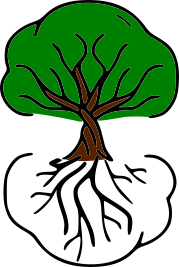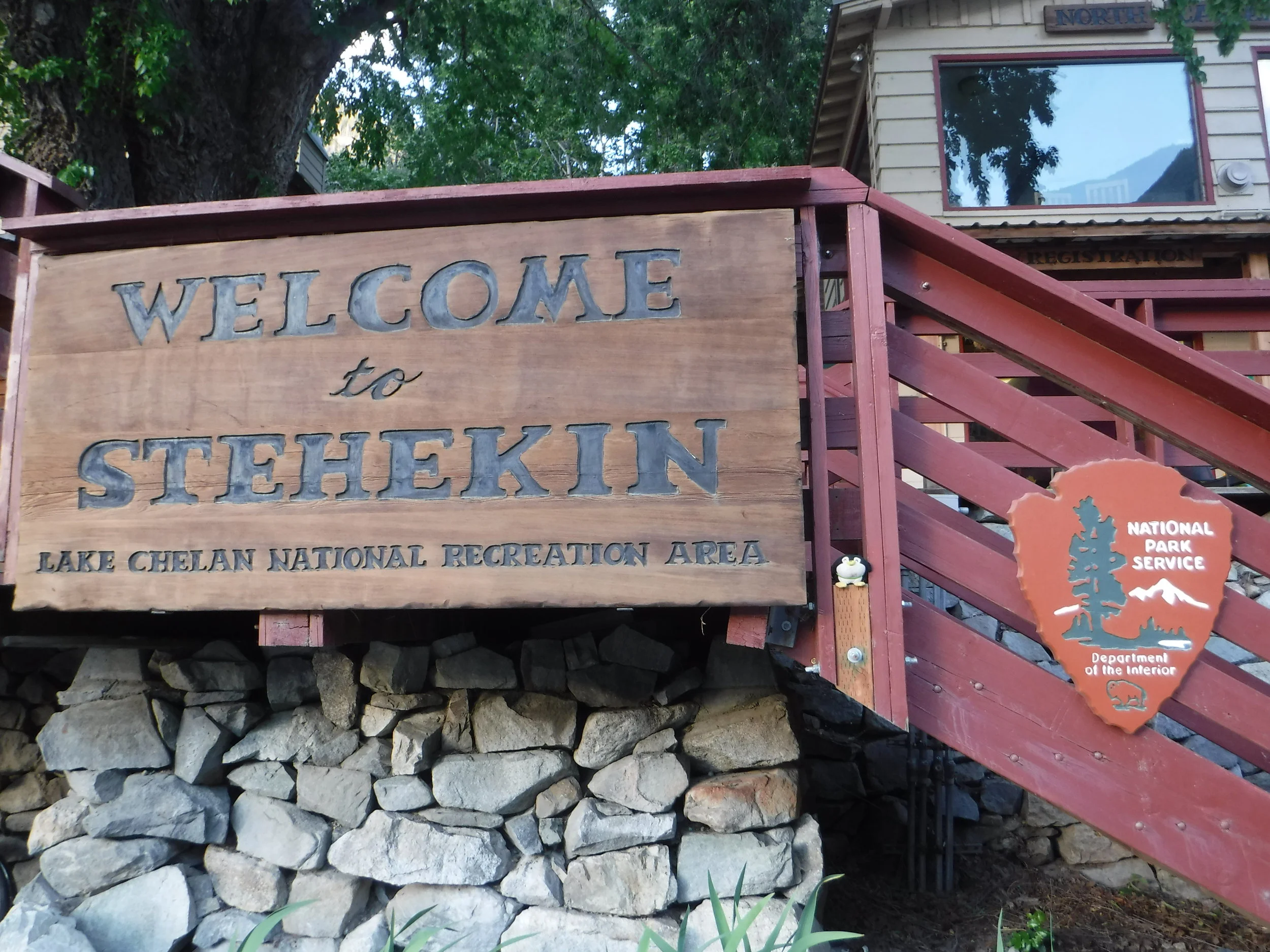-naut
ETYMOLOGY: From Ancient Greek
SUFFIX: Forms nouns meaning a voyager, farer, or tripper (From wiktionary.org)
One statement often said in my generation is that "we were 100 years too late to explore Earth, and 100 years too early to explore our solar system." Even though I was never an oceanaut and won't be an astronaut, this summer I got to be a Stehekinaut. But what was this "Stehekin" and why was I there all summer? It was a strange mix of seeing both how pioneers lived hundreds of years ago and how future colonies could be fashioned on other celestial bodies.
Imagine yourself boarding a ferry in Chelan early in the morning, seeing low rounded mountains with desert brush scattered all over. Chelan is your typical small, western town. One main street, tons of side roads, and a mix between old and newer cultures. Unlike the San Juan ferries, you can't take your car on Lake Chelan (unless you want it barged up for a few thousand bucks). Just you and your up to 75 lbs worth of belongings.
As you start to travel up the lake, the transition from Chelan to Stehekin can be seen in both natural and artificial ways. The dry, rounded mountain landscape turns taller, greener. After an hour or two it is looking more and more like the western side of the North Cascade mountain range. The roads and houses stop just before the last cell reception can be found.
After 50.5 miles of travel you are greeted with...
Let me just take a moment and stress how weird this feels. Ferries, and boats in general, are supposed to take you away from mountains and then return (like the San Juan Islands). It feels natural to have the mountains and civilization as a whole behind you as you are going to a more remote area. But to get to Stehekin you have to travel by boat further into the mountains.
"But Ben, couldn't you just drive if it is connected by land?" Nope. The only three ways to get to this town are by boat, plane (either land or water), or hike. No roads connect Stehekin to the outside.
This is where I was privileged to be all summer working as an intern with the National Park Service as part of my graduate program with the North Cascades Institute. But this internship required more than just working an 8-5:30 shift. I had to learn both place and community.
Northern end of Lake Chelan. Taken from Rainbow Loop Trail.
PLACE
The Stehekin valley as we know it today was formed thousands of years ago. The main river had been going through the valley before but the characteristic "U" shape comes from the Chelan glacier carving out the entire valley. The sediment buildup (moraine) at the end created a natural dam (at Wapato point) that formed the 50.5 mile long lake after the glaciers melted 11k years ago.
Located in the heart of the mountain range, the northern end of Lake Chelan shows signs of life from both the western and eastern sides of the mountains. Within arm's reach you will find both ponderosa pine and western red cedars.
Rainbow Falls is fed by glacial water and goes into Lake Chelan
The fauna are also quite mixed. Within a mile of one another you will find everything from sea gulls (or would they be lake gulls...?) to mountain goats. Deer followed me on trails, swallows perched on my bicycle, and black bear cubs ran with me on my commute home. In every sense of the word, this is a completely wild place.
But another weird looking hairless mammal has called this valley home for the last few centuries.
Annual Square Dance
COMMUNITY
When the glaciers melted away native people traveled up the lake and traded with the people of the Skagit Valley. We don't know their name or their culture, but they have left some signs of their existence, like the pictographs. They did not stay up lake since the winter was too harsh.
Pictographs at the northern end of Lake Chelan
After a few thousand years another native people, the Tsi-laan tribe (now pronounced Chelan) would travel along the same route. In their own tongue they named the northern part of Lake Chelan Stehekin, meaning the way through. They would use this place as a pitstop to trade. Living here would be too crazy/risky since the winters were too harsh.
You personally might hate the mindset of European settlement, but you have to at least appreciate their stubbornness when it comes to this valley. For thousands of years no one lived in the northern end of Lake Chelan because it was too remote/too harsh. Pioneers thought "I could make a living here" and went against thousands of years of knowledge. They were the first people to truly live in the valley.
Some of their decedents are still in the valley today. I affectionately refer to them as Stehekin Royalty: The Buckners, the Courtneys, and the Barnhearts. Plenty of other families have made their legacy in the valley, but these three have been around since the beginning of settlement.
Art show in the valley (one of the Buckner sisters is sitting in the chair).
When I first set foot in the valley I made sure to bring Stehekin: A Valley in Time. This book was written about Grant McConnell's time in the valley that also incorporates the history of this place. When I told a few locals about my experience reading it they said "Not worth your time. It 'Disneyfies' Stehekin."
The best way to describe the community of 75 year round residents of the valley is "mountain folk who also are island people." They are stubbornly independent while also vigorously accommodating.
Stehekin school
As an educator, I feel like public schools are a perfect litmus test for the strengths and faults of the community. Stehekin's school is no different. Last year Ron Scutt finished his final year of teaching and is happily retiring in the valley. He had taught the one room school house for the past 41 years.
Since the whole K-8 program has on average 5-10 students each year, each student gets tons of personal attention. Each year every student contributes to their own school newspaper The Way Through. Reading through the 2016 edition, I was amazed at the quality of work that each student contributed. The second grader's writing was superior to some of the writing of fifth graders that I worked with in New Hampshire.
This sort of work would have other schools jumping for joy, but it is just another day in the valley. Students' communication skills, problem solving, and artistic expression are forged through deep experiential education.
I felt like I found the Holy Grail of education! We just need to have students working in small communities so they can get the personalized attention that they need!
Deer in the Bucknard Orchard
What's the trade off though? Obviously if this style of teaching was working so well why haven't we implemented it all over?
For good or ill, the school and community in the valley don't hold dear a value that humanity as a whole has been grasping recently: more connection is better. Always. This mindset brings about many good things, like more diversity and easier access to resources. At the same time has it's problems; lack of connection with nature, fear of silence, increased violence.
After living there for three months I found that I didn't have what it takes to live in the valley. I could handle having to ship in all the groceries. I loved commuting nine miles to work everyday by bicycle on the one road. But since I grew up with viewing a lack of access to fast wifi as abhorring as a lack of access to clean water, this disconnection to the outside world really messed with me as a person.
Howard Lake
Do I believe that we should restructure our whole society to live in small remote communities like Stehekin? No. Do I believe that everyone should have an ethernet connection plugged into their skull so we are constantly connected? No.
"Give me moderation or give me death" is one of my favorite battle cries of all time. Students should be able to name the plants in their local area as well as having a decent typing speed. Math, science, art, social skills, engineering, and everything in between is what we should be striving for in our students.
As a global population we should take lessons from both Stehekin and our inner cities to help our hurting planet. By finding this perfect balance we will be one step closer to not just surviving, but thriving so we can explore the stars.










